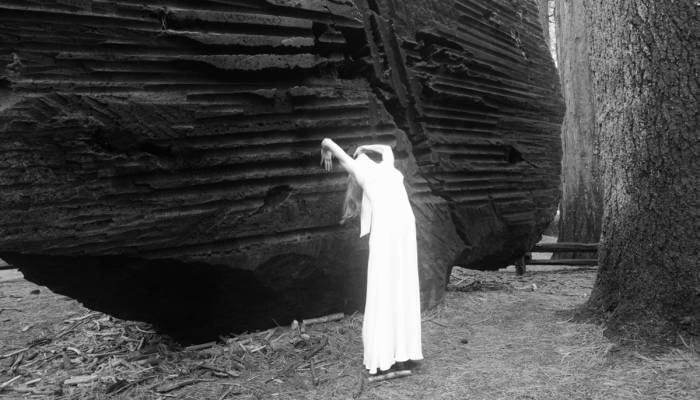The Eccentric Rituals of Brilliant Minds (A Fascinating Dialogue)
Taking a quick look at the different habits practiced by certain artists and thinkers make us wonder whether the relationship between genius and eccentricity is inescapable.
Since the beginning of time, genius has inspired awe, but also suspicion. While speculating about melancholy, Aristotle wondered why every outstanding person in the arts, politics and other spheres seemed to be ridden by “black bile”. But, beyond the philosopher’s interest in said temperament, the question can be read through that curiosity outstanding people awaken in us, a fascination doubly nurtured by the enigma of their genius and the eccentricity of their behavior.
Are all geniuses eccentric? Perhaps not, or at least not entirely —not full-time, as certain characters that have passed through a pop culture filter have led us to believe. But they all, undoubtedly, have some eccentric trait. Not just because they want to, or carry it out voluntarily or even consciously, but because the manifestations of these qualities are natural to a person who, in order to stand out, has had to think beyond the norm at one point or another in his life. Why do we listen to Beethoven’s music and not to that by dozens or hundreds of his contemporary composers? Is it not because Beethoven was able to do something that those other musicians could not do? And, what relation does this have with the hours he slept or the walks he would take in order tocompose?
The relationship between one quality and another can be controversial, perhaps because genius itself is controversial. The following glossary of eccentricities is a good instance of this.
For a certain period, pianist Glenn Gould would frequently go to Fran’s Restaurant, a diner in Toronto, around 2 or 3 in the morning, to indulge in a peculiar gastronomic ritual: scrambled eggs.
Another one of Gould’s legendary traits is his aversion to human touch and to cold weather. For the first, he almost sued Steinway & Sons, the piano makers, after an employee in the store patted his back and —according to the pianist— severely affected him. In terms of his second aversion, once in Sarasota, Florida, the local policemen confused him with a tramp and tried to arrest him, since despite the peninsula’s tropical weather, Gould was sitting on a bench in the park wearing heavy winter clothes.
Robert Walser developed a technique to write on practically any piece of paper he had at hand: a receipt, a piece of paper, a store-printed publicity, anything. He wrote “micrograms”, minute strokes where he would tell a story, compose a poem, and even create small dramas and short novels.
Among the many eccentricities for which Oscar Wilde stood out (even beyond his literature), is the stroll he took through the streets of Oxford with a lobster on a leash.
Next, we have composer Erik Satie, whose belongings included a collection of one hundred umbrellas and countless strips of paper that he kept inside his piano: these last contained the most wonderful little messages and notes, one of which simply read: “My name is Erik Satie, like everybody else”.
Some say that Graham Greene was obsessed with numbers, or at least with a combination of them. In an interview with Evelyn Waugh —his friend, also a writer—, he asserted that Greene could not write if he did not first randomly encounter a special number; according to her it was 987.
Among philosophers, Ludwig Wittgenstein is probably the champ of genius-associated eccentricity. Although he was born to one of the wealthiest families in Europe, he was a gardener in a monastery and a professor in several primary schools in Austria. “Don’t worry, I know you’ll never understand it”, he once told Bertrand Russell and other Oxford professors, who examined his Tractatus Logico-Philosophicus to award him his PhD. He later moved to Norway to isolate himself and write his Philosophical Investigations. The philosopher’s last eccentric feature were his “Secret Diaries”, books where he kept two parallel relations: on the one hand a common diary where he wrote the events of his everyday life —and perhaps a meditation here and there—; and in the opposite page, a bellicose log, sometimes that of sailor and sometimes of a soldier, but always with the appropriate language of each field. He used these impersonations to tell that which he was most ashamed of.
Related Articles
When ancient rituals became religion
The emergence of religions irreversibly changed the history of humanity. It’s therefore essential to ask when and how did ancient peoples’ rituals become organized systems of thought, each with their
Larung Gar, the valley that is home to thousands of Buddhist monks
If we think about the monastic life it is very probable that we think about solitude, seclusion, silence and a few other qualities whose common denominator is the appropriate isolation for mediation
Dialogue with the Dalai Lama on science and spirituality
The Dalai Lama has been interested in science since he was a child. Over the years he’s visited many laboratories and has attended conferences that discuss consciousness from the scientific point of
A New Year's resolution for the earth
Worrisome quantities of waste are generated by human populations. Especially in cities, these have reached unprecedented and alarming levels. A largely uncontrolled practice, it affects everything on
The Dark Mountain Project: or how literature can confront ecocide
One impulse from a vernal wood May teach you more of man, Of moral evil and of good, Than all the sages can. Wordsworth, “The Tables Turned” (fragment) Words are elementary. The only reason we can
Are there no women in the history of philosophy?
Do only men philosophize? This could sound like a silly question, but if we quickly review the names of philosophers, from Aristotle to Slavoj Žižek, it would appear to be an exercise that is
Things that are about to disappear: photography as environmental conservation
Cristina Mittermeier is the founder of the International League of Conservationist Photography (iLCP), and is at the front of a modern movement to use photography with environmental purposes. Her work
Architecture And Music; An Affair That Acts On The Matter
A composition is like a house you can walk around in. — John Cage Perhaps music, more than the art of sound, is the art of time. That’s why its communion with space, and architecture, is so often so
Psycho-geography (On The Ritual Casting of a City)
Mrs. Dalloway walked down the streets of London guided by an “internal tide” that made her stop somewhere, enter a store, turn at the corner and continue her journey, as if she were adrift. La dérive
A Theme Park Inspired by Hayao Miyazaki is About to Open …
One of animation’s most spectacular exponents, Hayao Miyazaki, is the artist who transformed the direction of traditional animation forever.










